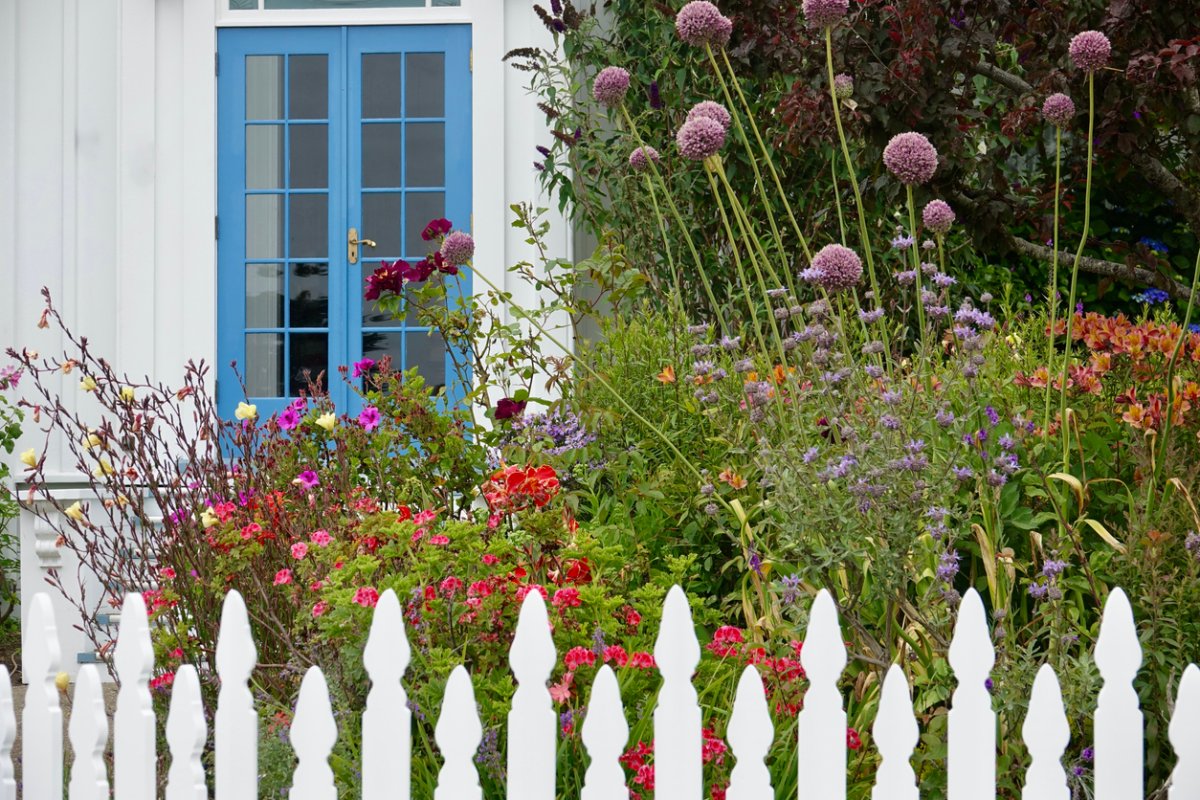

We may earn revenue from the products available on this page and participate in affiliate programs. Learn More ›
The fragrance of a flower can transport you back in time to a beloved aunt’s cottage garden, or perhaps remind you of a cherished visit to a land far away; the scent of a bloom can truly be the scent of love. The good news is that you can recreate those warm sensations in your own backyard.
All of the following plants offer intoxicating fragrance for your garden. And while the biodiversity of the United States is significant, you’ll find something for every garden, in every region, on this list, even if winter’s persistence shortens the time to enjoy the beauty and aromas.
1. Pineapple Sage (Salvia elegans)
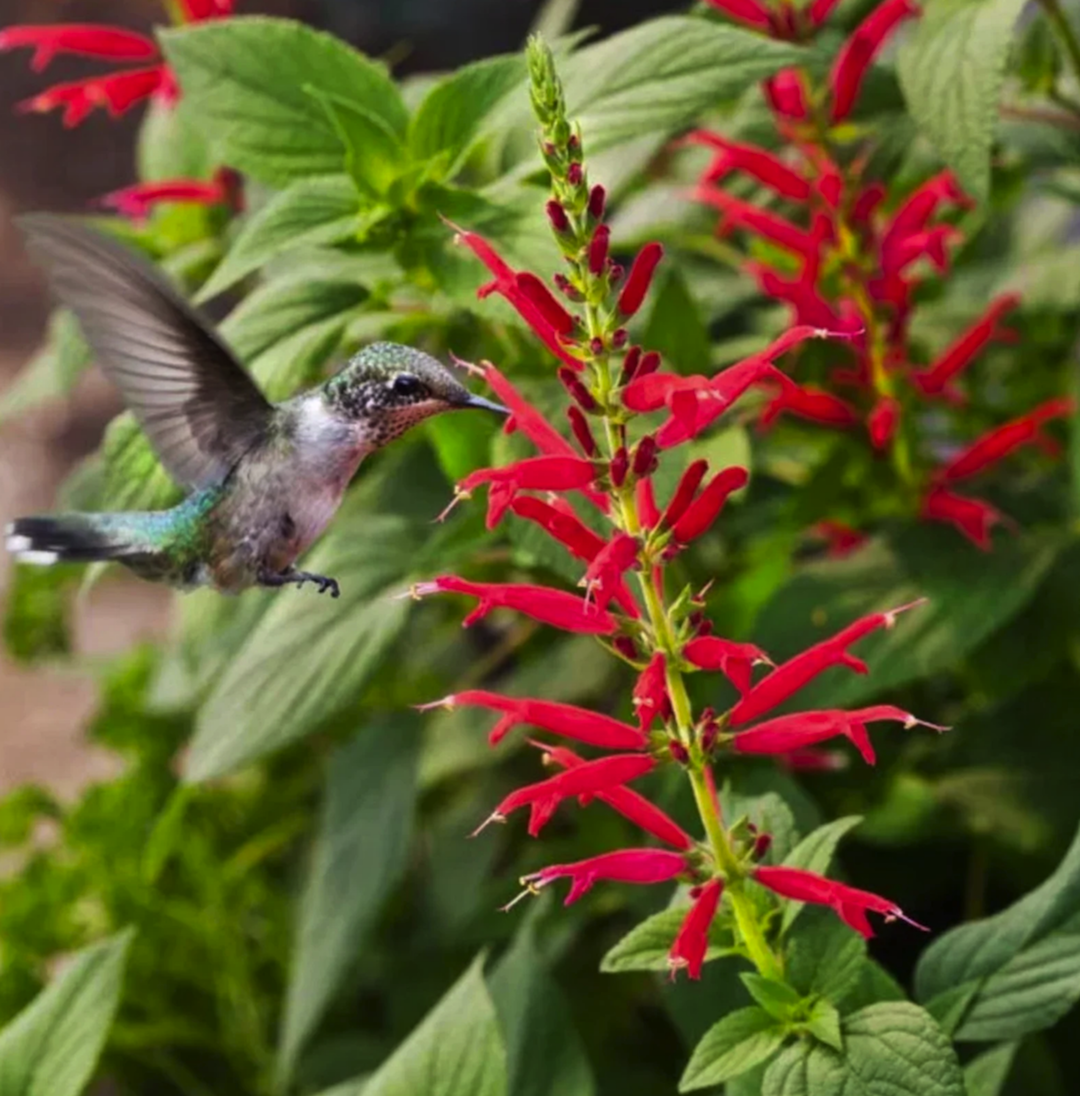
If pineapple sage’s spiky red blooms don’t catch your attention, its sweet pineapple scent surely will. This Mexican native is a perennial in USDA zones 8 to 11, but can be grown as an annual in other parts of the country. Its tubular flowers attract bees, butterflies, and hummingbirds; the minty-tasting flowers are also used by humans as an addition to salads or a garnish for dessert. The leaves, too, are edible and can be used to make tea and jam.
RELATED: 20 Perennials to Plant in the Fall for Beautiful Spring Flowers
2. Gardenia (Gardenia jasminoides)
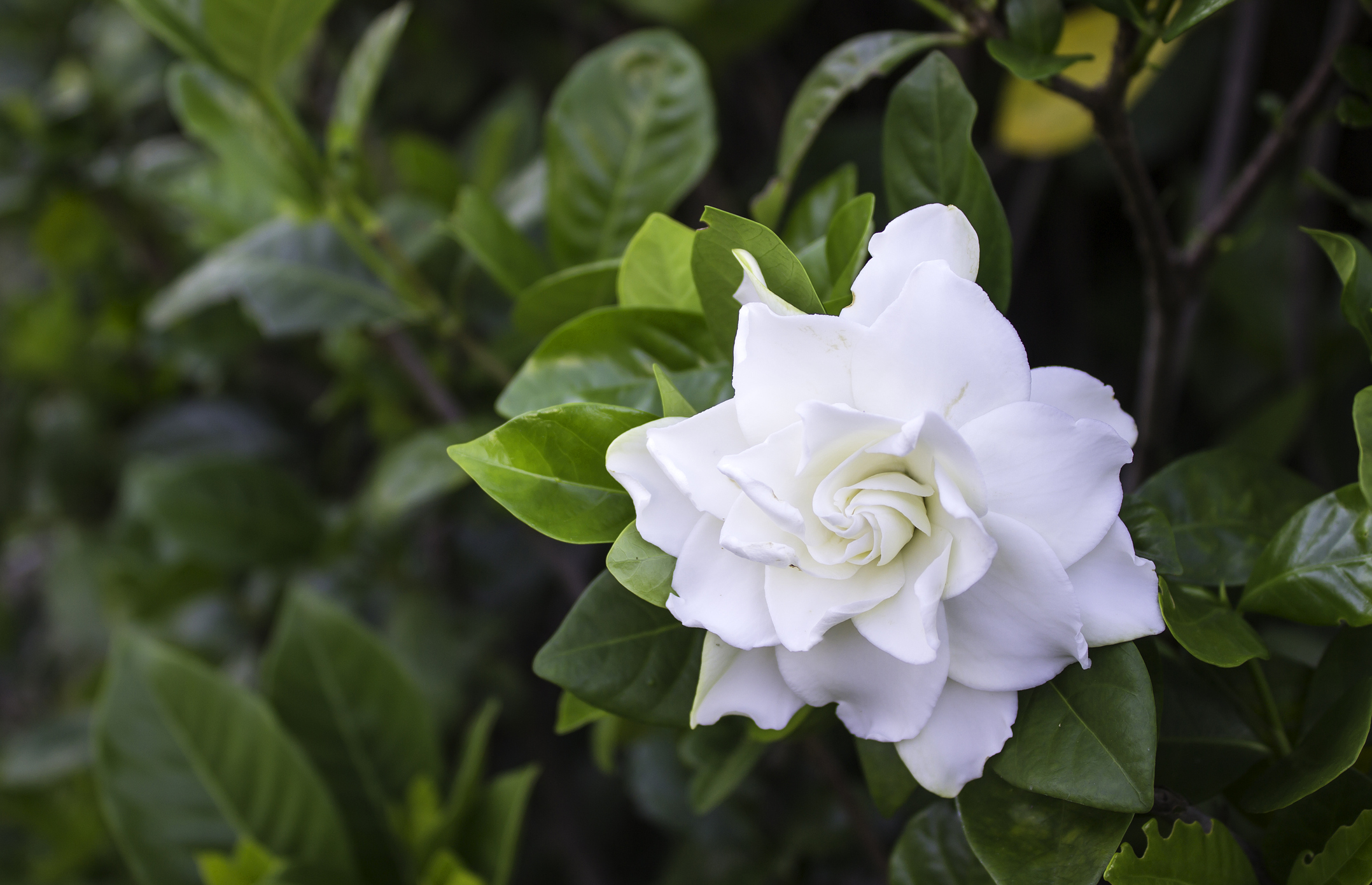
Thanks to its sweet scent, gardenia is infused in perfumes all over the world. Hardy in zones 8 through 11, gardenia shrubs can be grown both indoors and out, where their evergreen foliage and white flowers delightfully upgrade the landscape. Notoriously finicky, gardenias need rich and loamy soil that is acidic; they also like high humidity. They need a lot of morning sun, but some afternoon shade.
3. Jasmine Tobacco (Nicotiana alata)
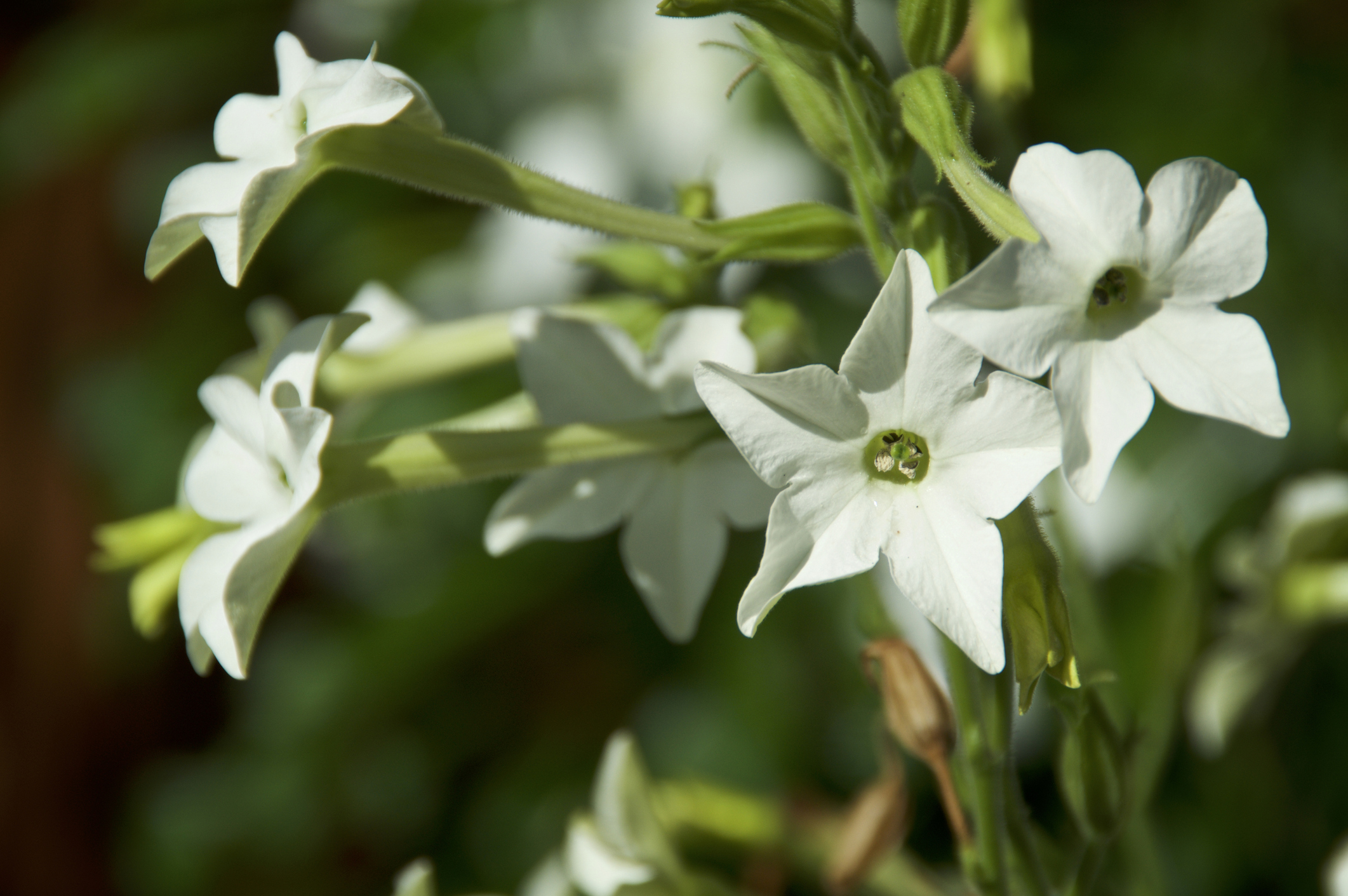
While most varieties of nicotiana are fragrant, the scent of jasmine tobacco is particularly pronounced. The star-shaped flowers on this garden stunner are especially impressive at night, because their aroma grows stronger after dusk. Hardy in zones 10a to 11b, jasmine tobacco may be grown as an annual in other zones. It needs fertile, moist soil and it has no serious pest problems.
RELATED: How to Grow a Moon Garden at Home
4. Stargazer Lily (Lilium orientalis ‘Stargazer’)
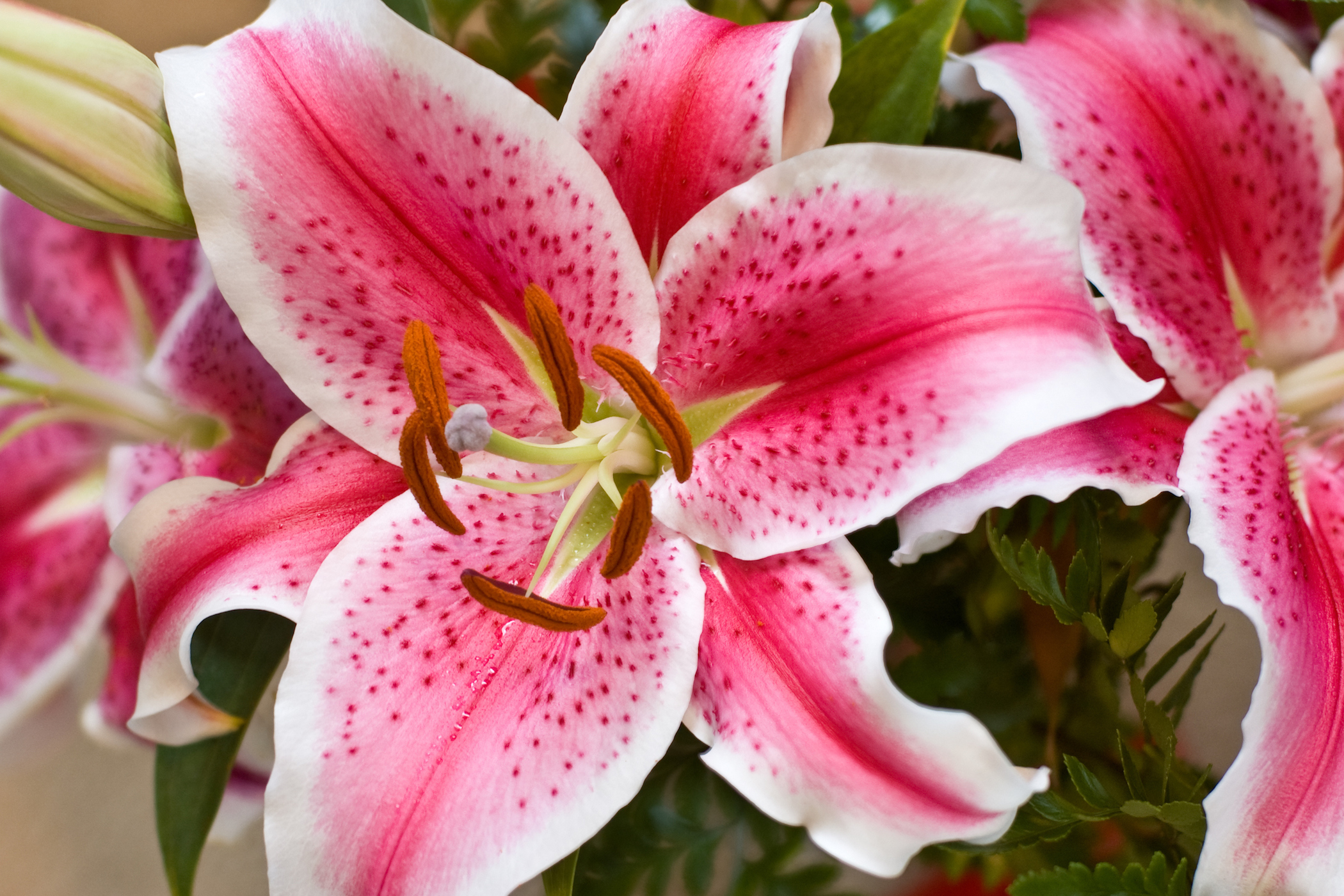
This showy flower’s large, outward-facing blooms aim toward the sky, thus the name “stargazer.” In addition to its pleasant scent, the lily’s strong stalks and pink-spotted flowers bring vibrancy to gardens and containers alike. The stargazer lily is hardy in zones 4 through 9 and likes full sun. Keep the soil around the plants uniformly moist.
5. ‘Scentsation’ Honeysuckle (Lonicera periclymenum ‘Scentsation’)
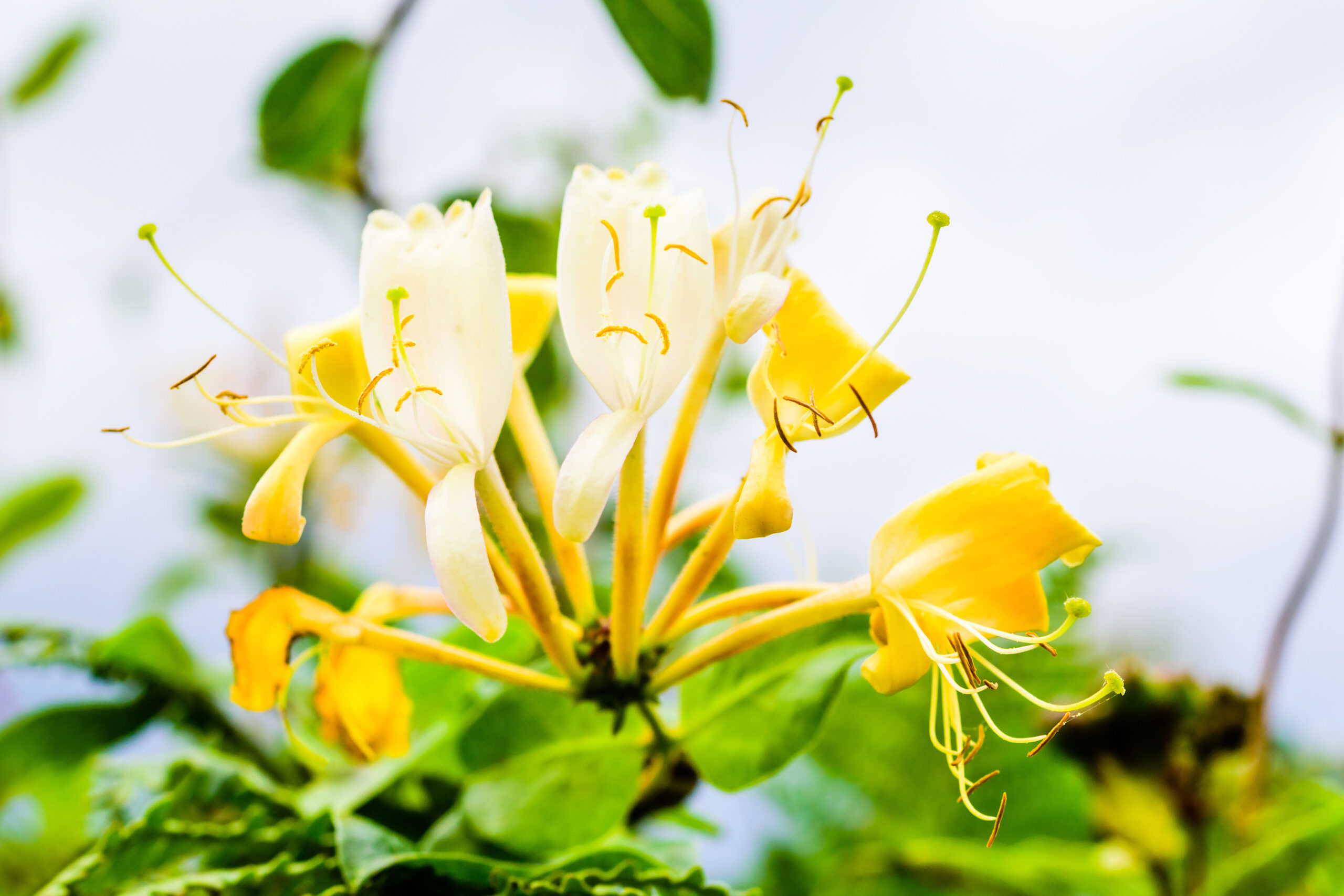
The tubular yellow flowers of Scentsation honeysuckle bloom from mid-spring to late summer, when they give way to bright red berries. The deciduous vine is hardy in zones 4 to 9, and it can grow to 10 feet tall. It will tolerate full sun but doesn’t mind a bit of afternoon shade. Consider adorning a trellis with this fragrant plant.
6. Four O’Clocks (Mirabilis jalapa)
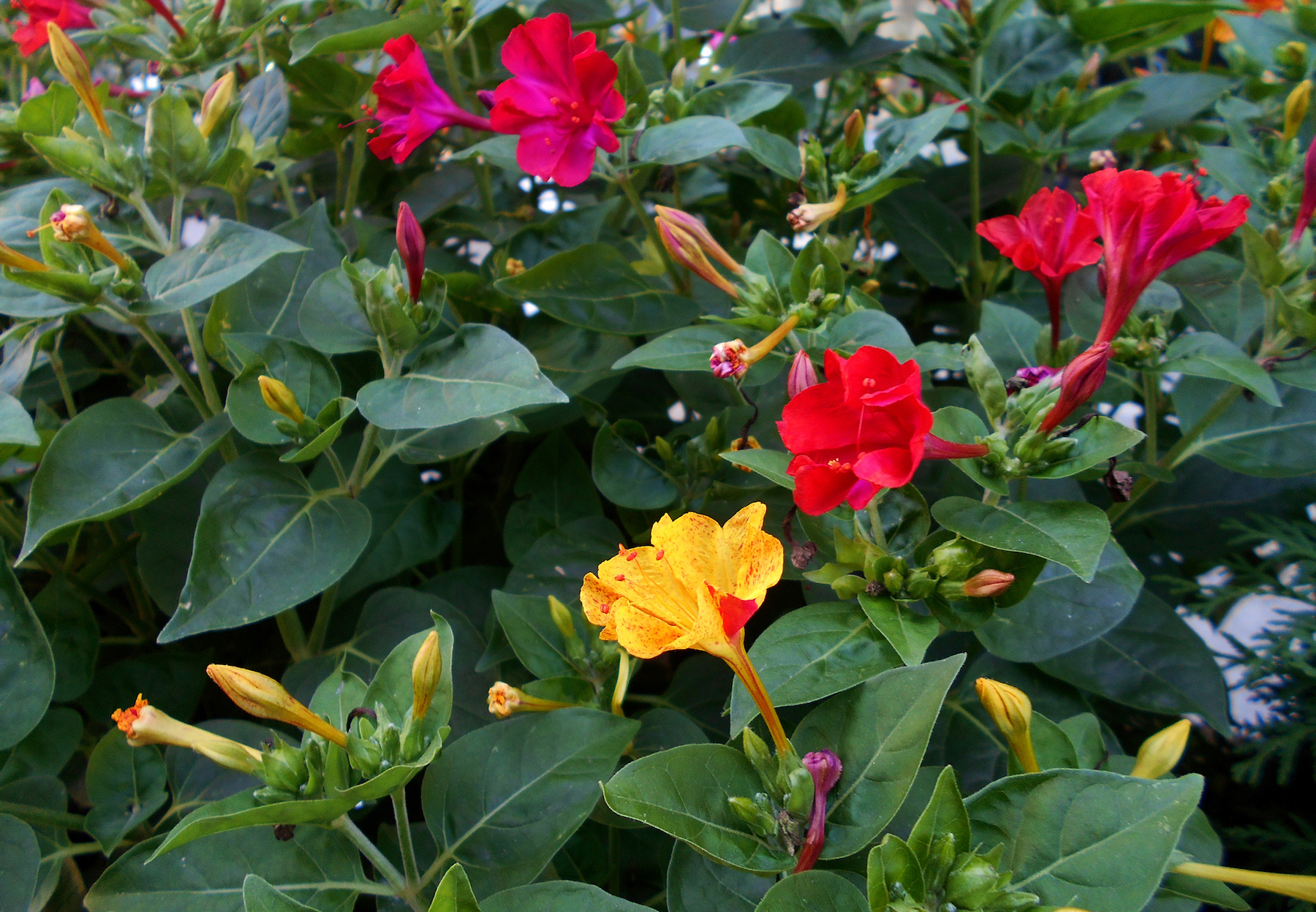
This bushy plant’s name stems from its tendency to bloom late in the afternoon. Four o’clock is hardy in zones 9 to 11, but gardeners in other areas can dig up the plant’s tubers and overwinter them in a place that stays above freezing. Its lemony scent and vibrant color palette bring tropical vibes to any porch, patio, or yard.
RELATED: 30 Low-Maintenance Plants for Your Easiest Garden Ever
7. German Chamomile (Matricaria recutita)
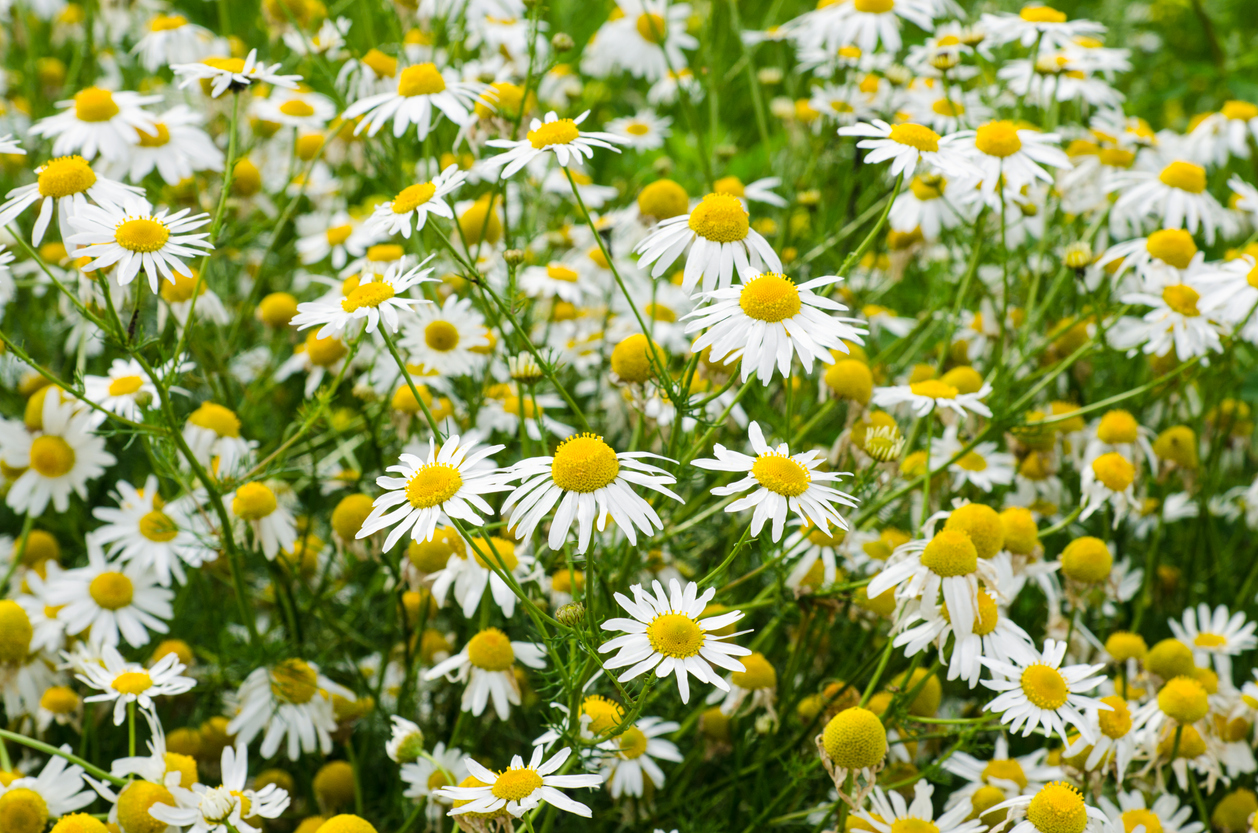
With daisy-like flowers and an herbal scent, German chamomile adds a dainty element to any garden—and it provides a supply of homemade tea to boot. To ensure many steaming cuppas, grow the chamomile in well-draining soil with plenty of sunlight, though it can tolerate a bit of shade. This plant is hardy in zones 5 through 8, but reseeds liberally, so it might feel like a perennial in other zones.
8. ‘Baby Moon’ Daffodil (Narcissus ‘Baby Moon’)
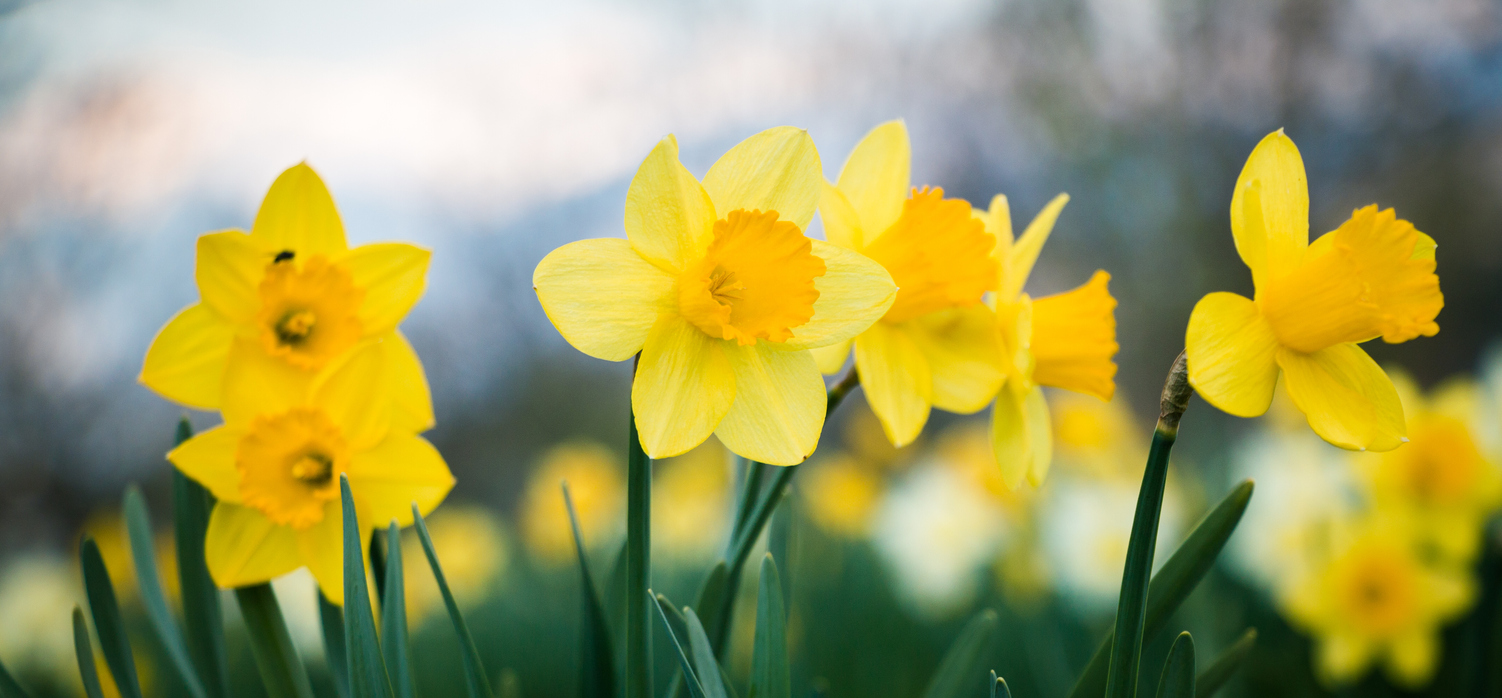
Considered a miniature daffodil because of its small size, Baby Moon is perhaps the most fragrant plant in the daffodil family. The plant is hardy in zones 4 to 9 and its golden-yellow flowers bring a sunny touch to any garden or container. Note that this plant is toxic to people, horses, and pets.
RELATED: 14 Old-Fashioned Flowers That Still Look Great in Today’s Home Gardens
9. Tuberose (Polianthes tuberosa)
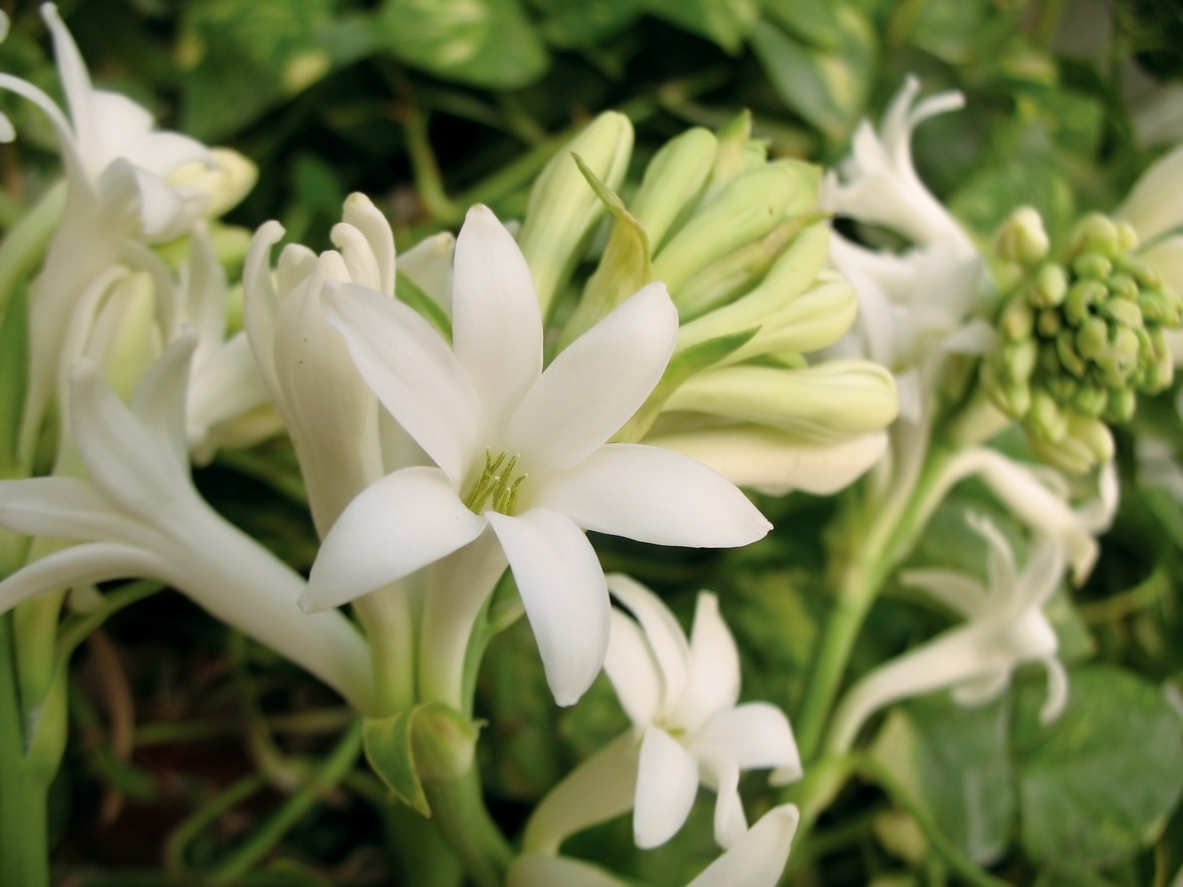
Grow this South American flower, and you’ll enjoy a season of exotic fragrance. The scent has been compared to everything from gardenias to vanilla to buttered popcorn. Tuberose is hardy in zones 7 through 10, and gardeners in other areas can dig up the rhizomes to overwinter them. Clusters of fragrant white flowers burst from stalks as tall as 4 feet.
10. Freesia (Freesia spp.)
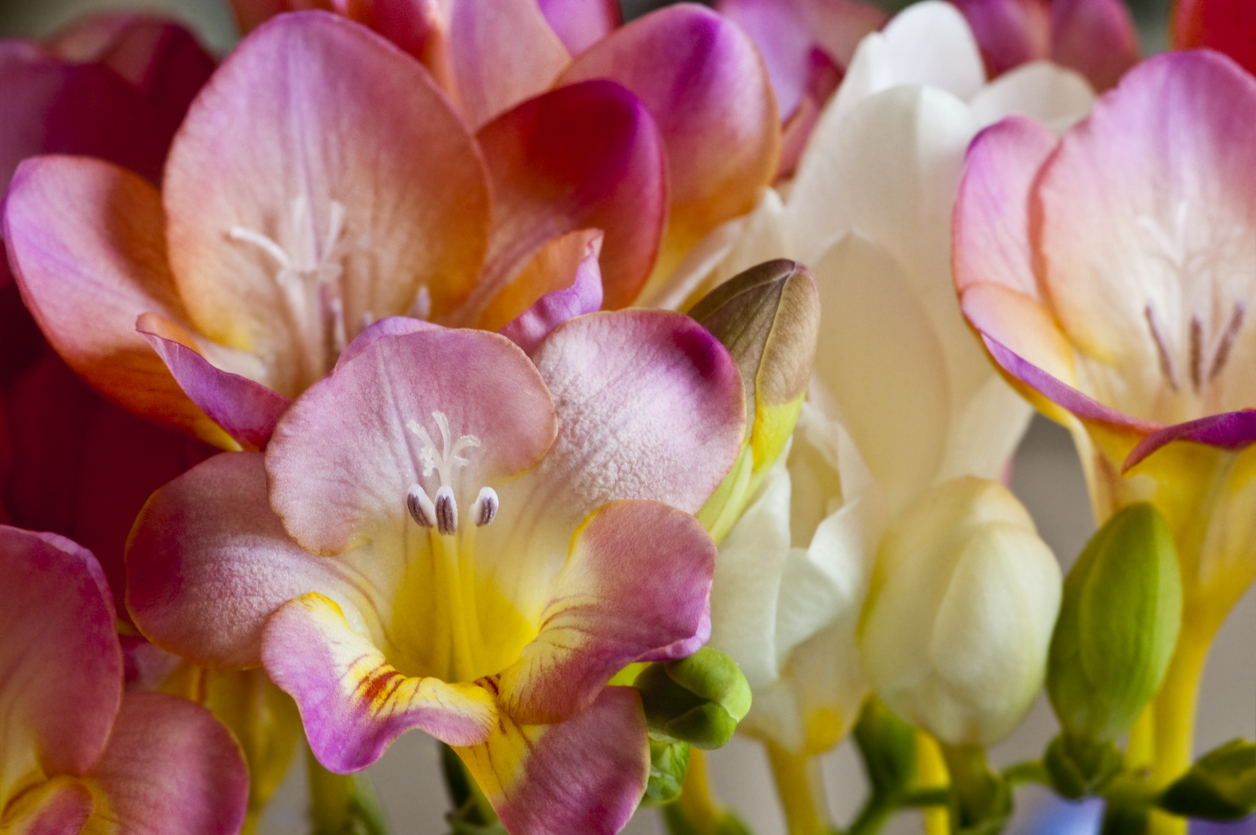
Though freesia is available in multiple varieties and colors, every flower shares a pleasantly sweet aroma. That’s why you’ll find freesia-fragrant soaps, perfumes, scented oils, and lotions. Native to southern Africa, the plant is hardy in zones 9 and 10; gardeners in other regions can plant the corms (sort of like a bulb) in early spring after danger of frost has passed.
RELATED: 12 Bulbs to Plant in the Spring for Showstopping Summer Blooms
11. Heliotrope (Heliotropium arborescens)
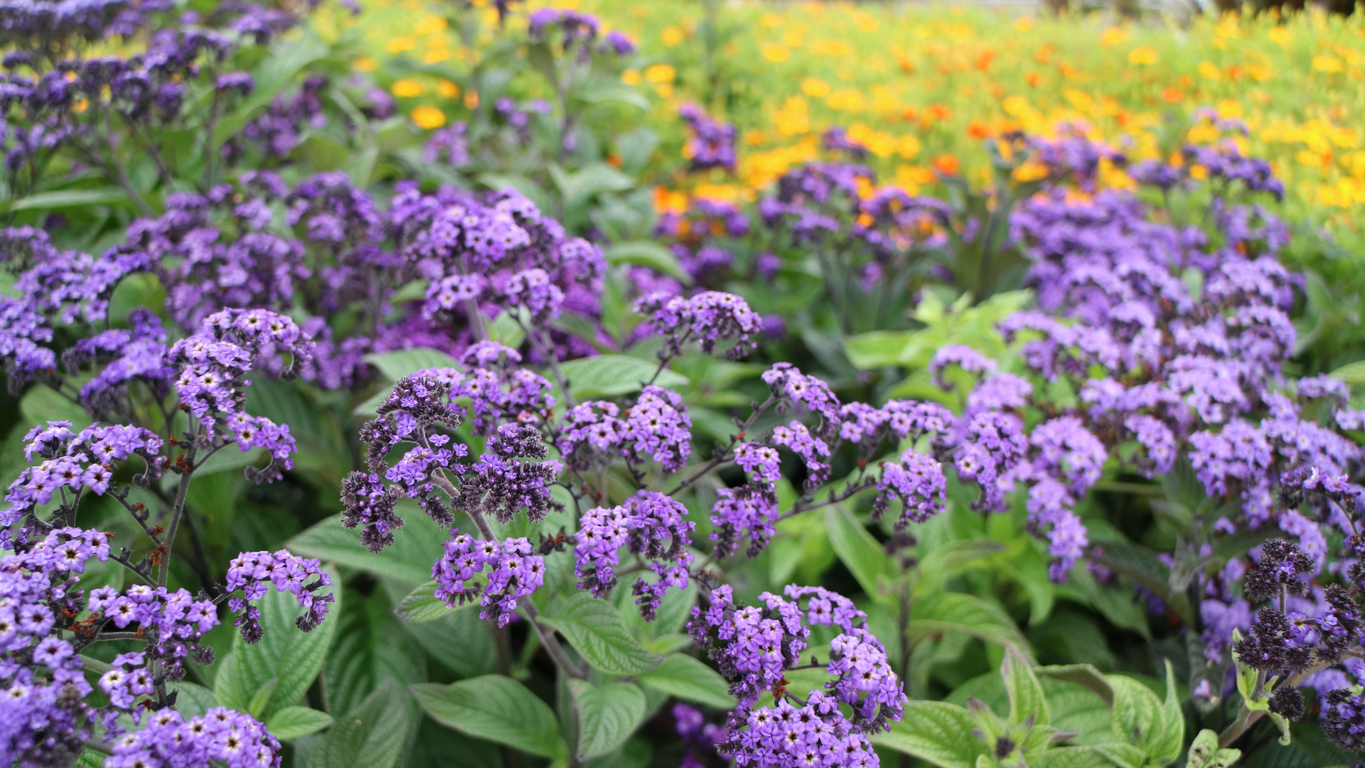
Heliotrope’s distinctive cherry and vanilla scent earned it the nickname “cherry pie plant.” Gardeners will enjoy the shrub’s attractive, dark-green foliage and large clusters of tiny white or purple-hued buds that bloom in the summer. The plant is hardy in zones 9 to 11; gardeners in other areas often grow heliotrope as an annual. Cherry pie plant is heat- and drought-tolerant, and deer do not bother it.
RELATED: 17 Deer-Resistant Plants, Flowers, and Shrubs
12. Chocolate Flower (Berlandiera lyrata)
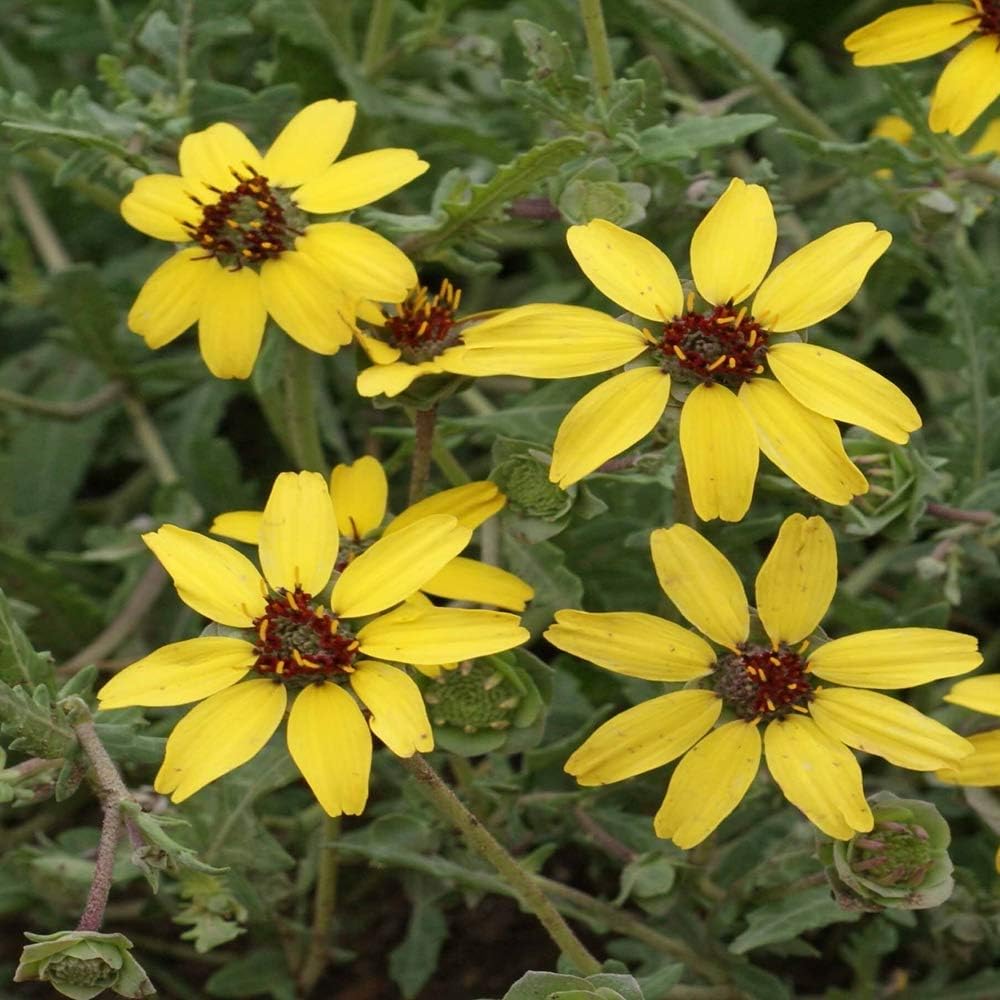
Native to the southwestern regions of the United States and to Mexico, this daisy-like flower (also known as Lyreleaf Greeneyes) radiates a heady cocoa smell and is hardy as far north as zone 4 or 5. You’ll probably notice the scent mid-morning, before the afternoon sunlight causes the petals to close up. The drought-tolerant chocolate flower plant can grow to be 2 feet tall by 2 feet wide.
13. Star Jasmine (Trachelospermum jasminoides)
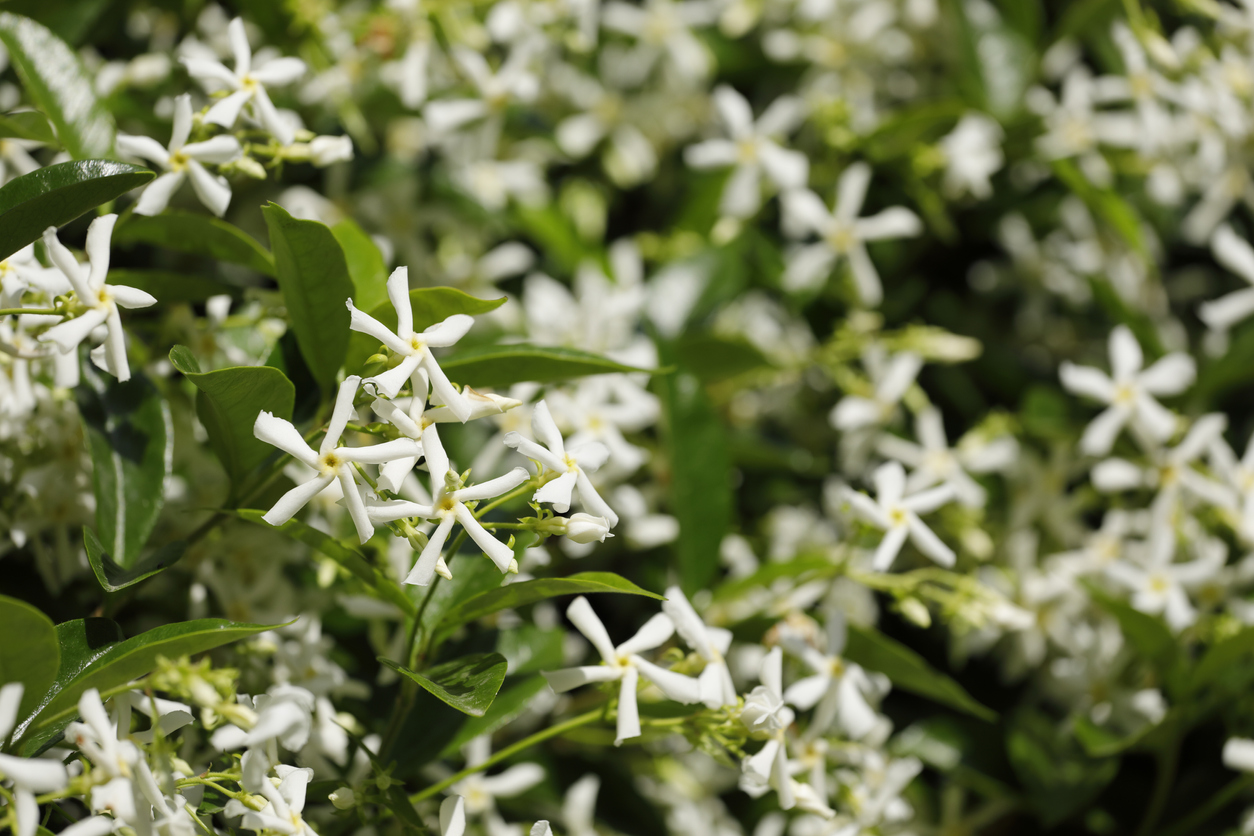
If you’re looking for a vigorous vine that scrambles quickly up fences and posts, consider star jasmine. In springtime, this climber bursts into flower, displaying delicate, star-shaped white flowers that perfume the entire yard with an absolutely delightful, sweet scent. This Chinese native is hardy in zones 7b to 10. It does best in full sun, but will tolerate some afternoon shade when the weather is hot.
RELATED: Late Bloomers: 25 Summer Flowers to Keep Color in Your Garden
14. Texas Mountain Laurel (Dermatophyllum secundiflorum)
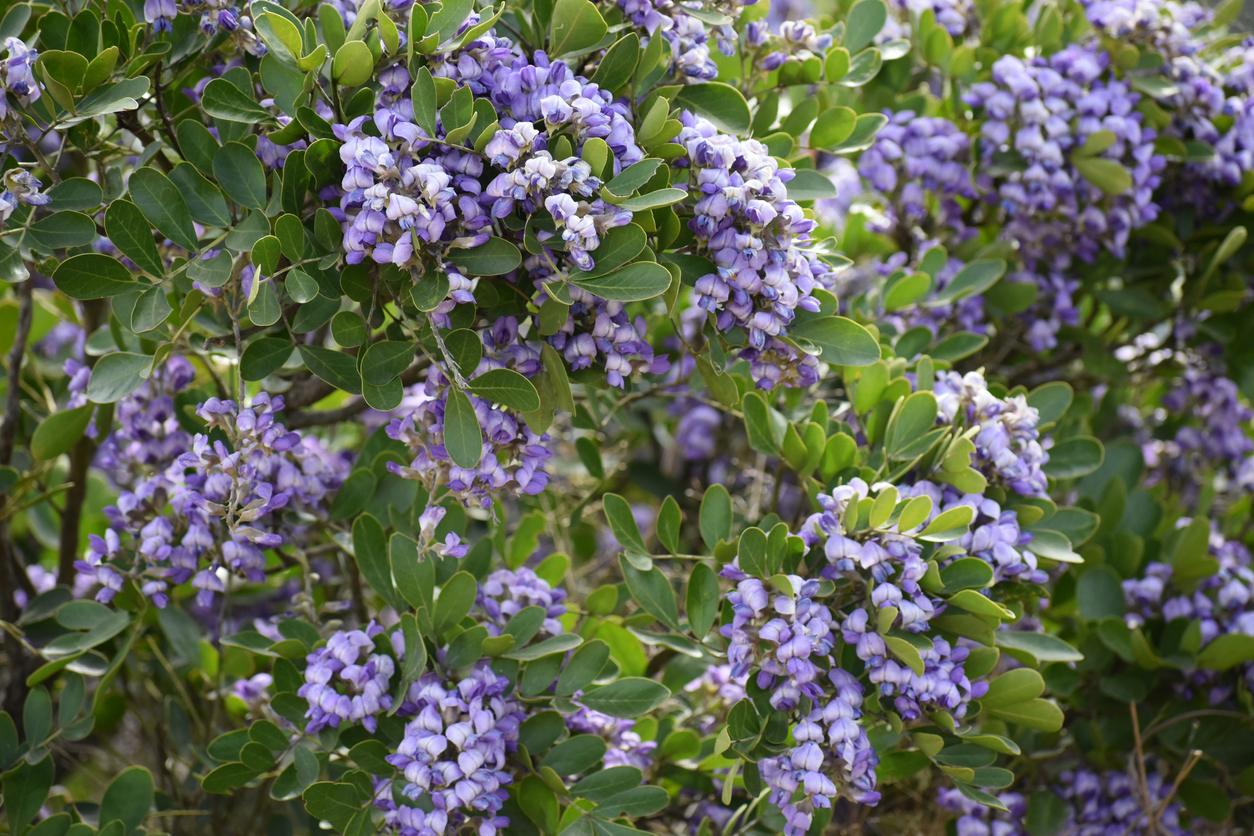
Don’t fret if you’re not from Texas. Texas mountain laurel does well in zones 7b to 10b, so you might be in luck even outside the Lone Star State. This slow-growing shrub/small tree is evergreen with glossy, leathery, dark green leaves. In springtime, its cascading clusters of purple flowers spring into action, releasing a scent that some describe as similar to grape Kool-Aid. But the fragrance is actually deeper and more sophisticated than any processed-food smell. Texas mountain laurel is drought-tolerant once established and isn’t too particular about soil.
15. Honey Perfume Rose (Rosa ‘Honey Perfume’)
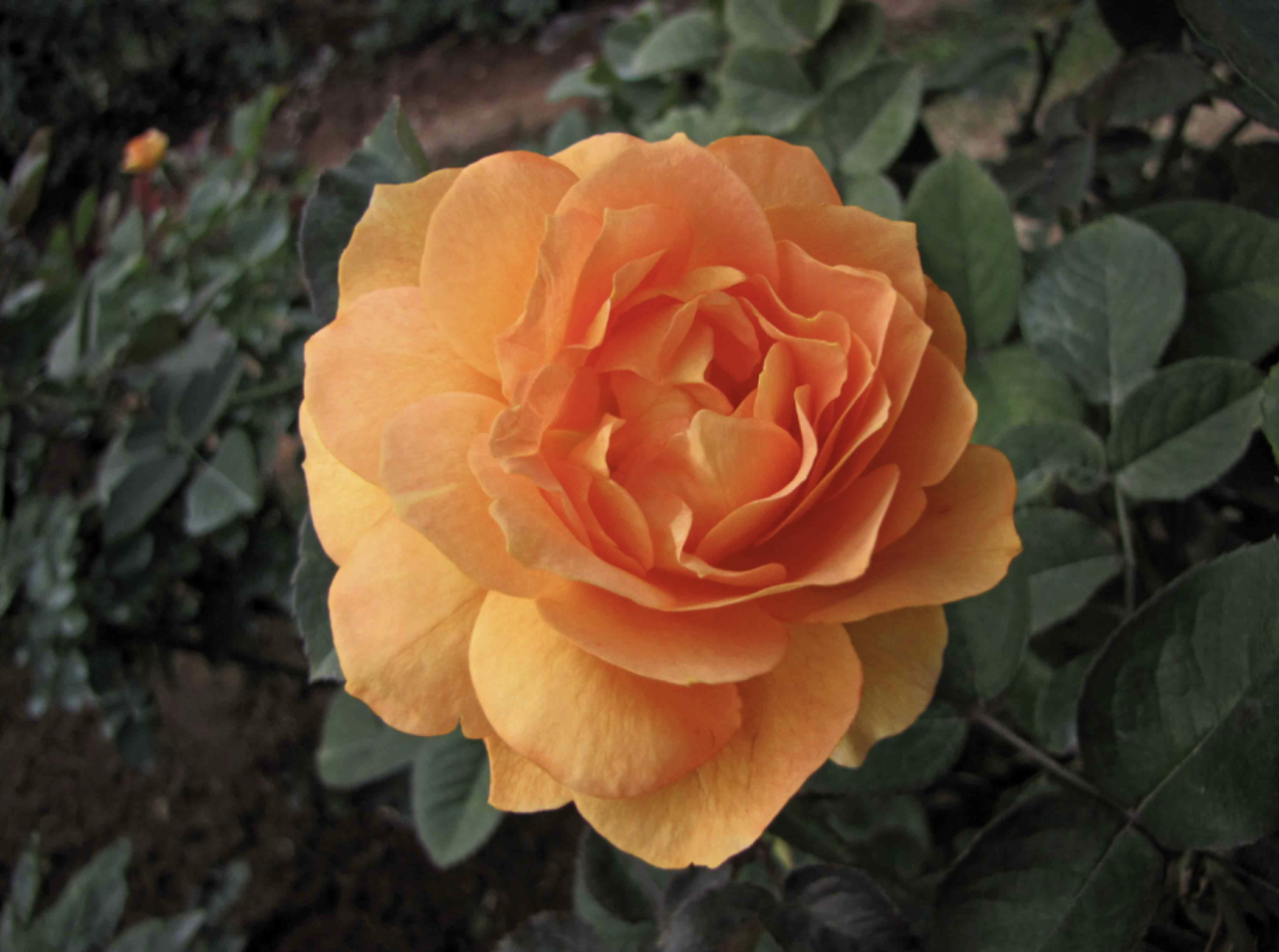
Roses, of course, are among the garden’s most legendary fragrance producers. The Honey Perfume cultivar is particularly coveted for its warm aromas of cloves, cinnamon, allspice, and nutmeg. Displaying clusters of orange-yellow ruffled blooms, this plant will do well in zones 5 to 9, though, like many of us, it doesn’t like very hot conditions. Plant it in full sun, in slightly acidic, well-draining and fertile soil and expect it to grow to at least 3 feet tall and wide.
RELATED: The Best Soil for Roses
16. Lavender (Lavandula spp.)
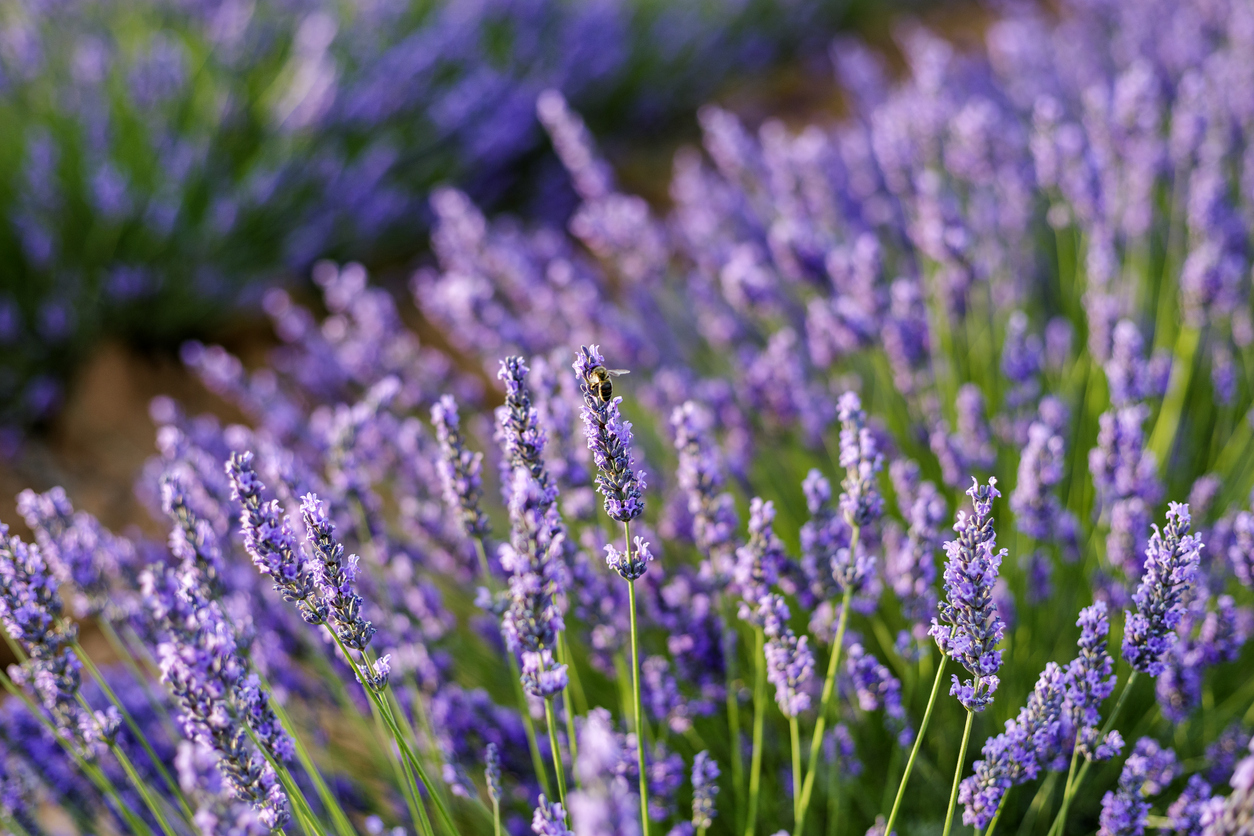
This bushy perennial is beloved the world over for its floral perfume. There are many subtypes of lavender, but in general lavender likes full sun and well-draining soil. Some lavenders—the English types, which are actually from the Mediterranean—can take temperatures as low as those experienced in zone 5. Other types, native to other parts of the world, can survive only as low as zone 7. Lavender forms upright clumps as tall as 3 feet, bearing long columns of dainty purple, lavender, or pink aromatic flowers. The plant’s gray-green foliage is striking and aromatic, too.
17. Sweet Pea (Lathyrus odoratus)
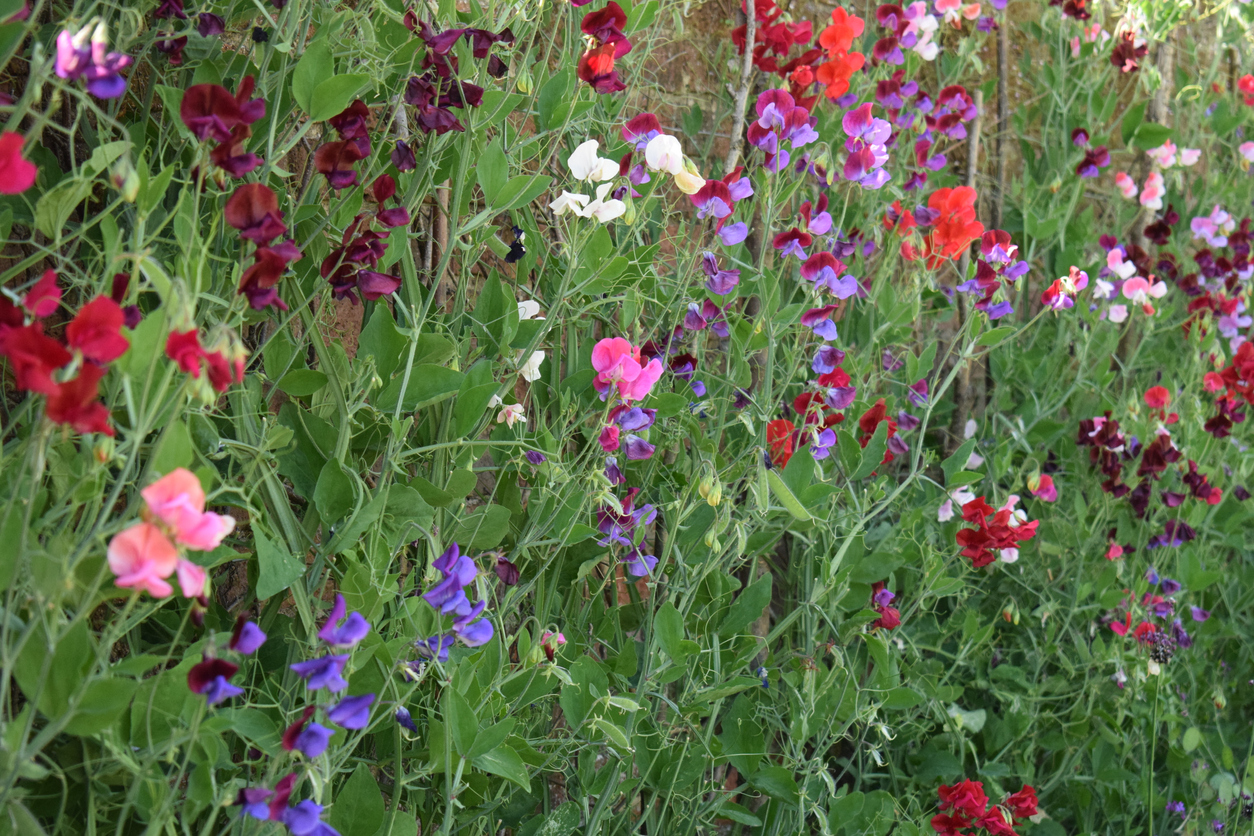
The fragrance of sweet pea might bring to mind old-fashioned cottage gardens. Some varieties of this inedible plant are vining, while others are bushy. The plant’s white, pink, or purple flowers offer an intense scent that has been described as having notes of hyacinth and rose, and they make a wonderful addition to bouquets. Most sweet peas are annuals, dying off after reseeding, but some cultivars can be perennial. Sweet peas like sun but not too much heat, and they need well-draining soil. They are heavy feeders, so provide plenty of fertilizer throughout the growing season.
RELATED: 10 Climbing Plants That Are Easy to Keep Under Control
18. Dwarf Desertpeony (Acourtia nana)
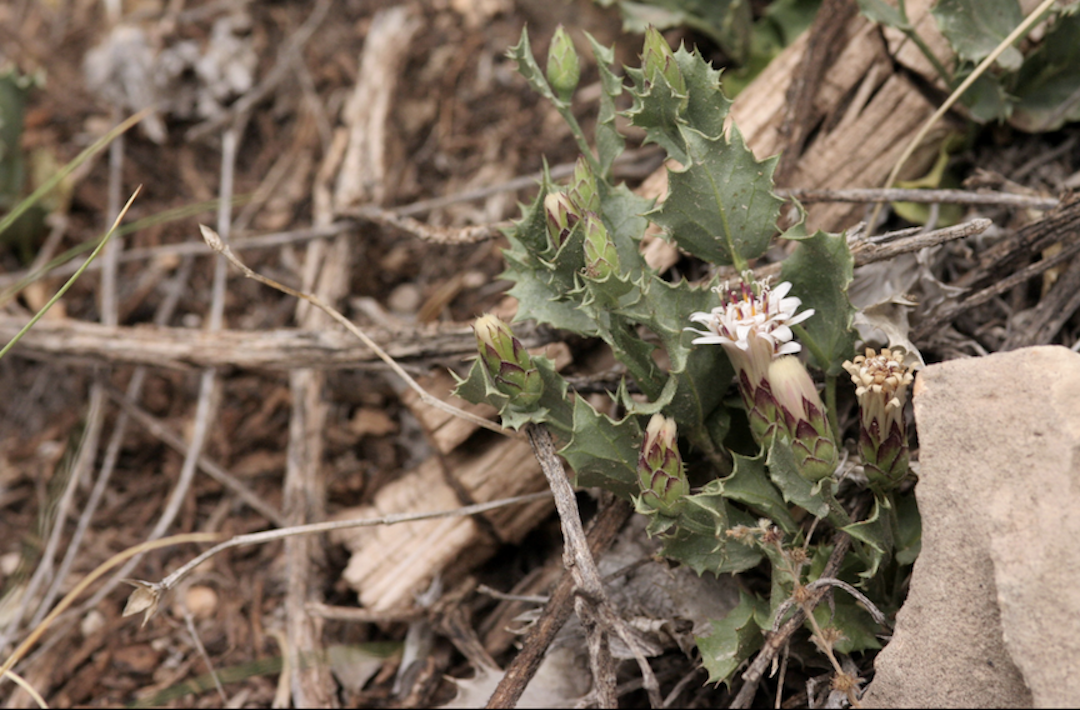
Desert dwellers of the Southwest, this one’s for you. An Arizona native, dwarf desertpeony grows to just 8 inches tall with frilly flowers in purple, pink, or white that produce a scent similar to that of jasmine or violet. It can bloom from early spring through November. Its leaves are leathery and shaped like holly leaves with spines. Unsurprisingly, this perennial likes lots of sun and dry soil.
19. Rosemary (Salvia rosmarinus)
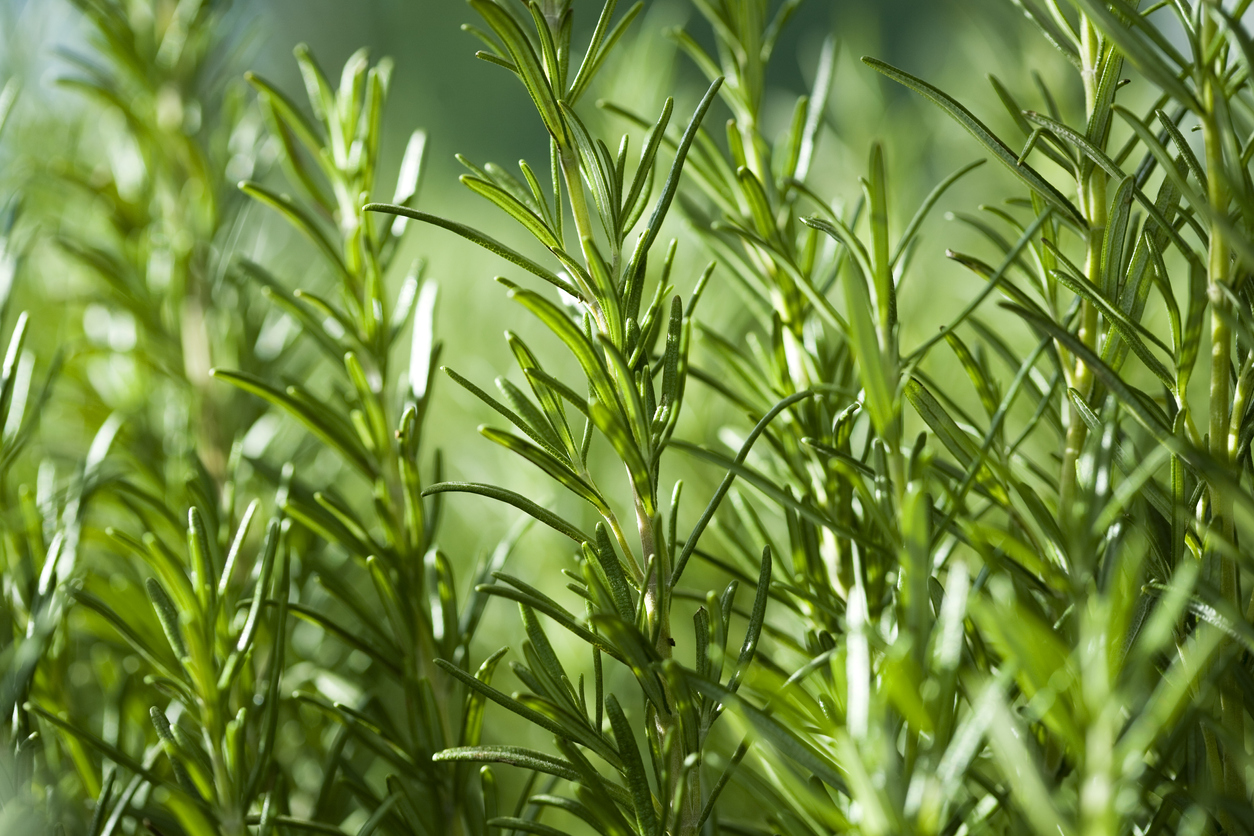
Run your fingers along the needle-like leaves of rosemary and you will be rewarded with the unmistakable scent that characterizes this fragrant shrub and the many delicious foods that are seasoned with it. In general, rosemary is hardy to zone 7, though some cold-tolerant varieties may do well in other zones. Growing to 5 feet tall and equally wide, rosemary likes full sun and is drought-tolerant, making it a nice evergreen addition to a rock garden. It isn’t fussy about soil, as long as it drains well.
RELATED: 15 Perennial Herbs to Grow for Years of Fresh Flavor, Pest Control, and Cleaning Supplies
20. Giant Hyssop (Agastache)
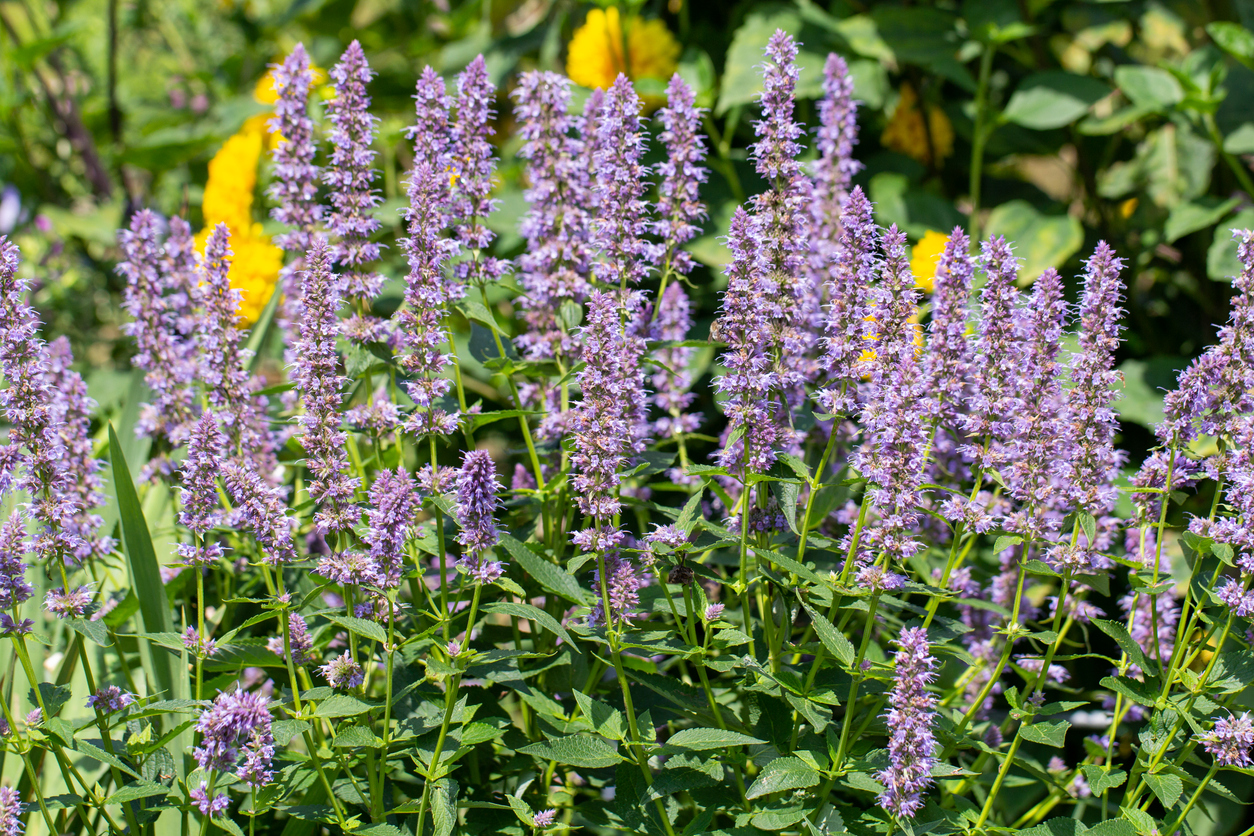
With numerous agastache types from which to choose, you can find one that suits your garden perfectly. Depending on the variety you plant, your reward will be a perfume reminiscent of anise, mint, lavender, or a combination of those. Growing to as tall as 6 feet, plants produce long flower stalks—blue, purple, white, orange, or pink—that attract butterflies, bees, and hummingbirds. This sun-loving, drought-tolerant perennial is hardy in zones 4 to 10. Plant giant hyssop in well-draining soil that isn’t too rich in organic matter.
